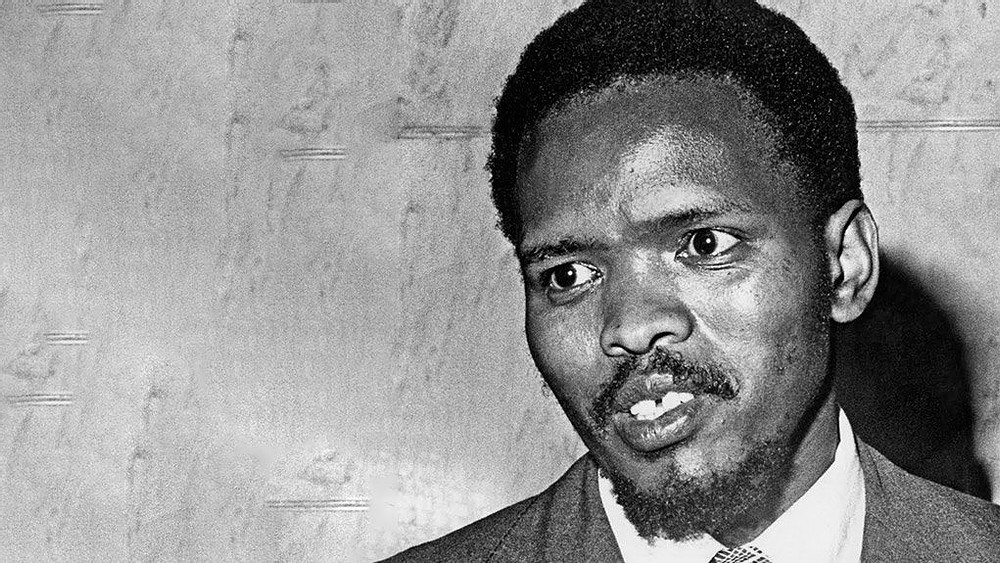Black Consciousness Movement Grade 12 Essay Guide (Question and Answers) and Summary: The Black Consciousness Movement (BCM) was a grassroots anti-Apartheid activist movement that emerged in South Africa in the mid-1960s out of the political vacuum created by the jailing and banning of the African National Congress and Pan Africanist Congress leadership after the Sharpeville Massacre in 1960.
Steve Biko and the Black Consciousness Movement Summary: A Legacy of Empowerment and Resistance
Stephen Bantu Biko, born in 1946 in South Africa, was a prominent anti-apartheid activist and leader of the Black Consciousness Movement (BCM). The movement played a crucial role in the fight against apartheid by empowering black South Africans to embrace their identity, instilling pride and self-worth, and promoting resistance against the oppressive regime. This article will discuss Biko’s life, the origins and objectives of the Black Consciousness Movement, and the lasting impact of Biko’s ideas on South Africa and beyond.
Early Life and Influences
Steve Biko grew up in a society deeply divided along racial lines. From an early age, he was exposed to the harsh realities of apartheid, which inspired his lifelong commitment to fighting against racial oppression. As a student at Lovedale High School, Biko encountered the writings of Frantz Fanon, a psychiatrist and philosopher from Martinique who advocated for the liberation of colonized peoples through mental emancipation. Fanon’s ideas influenced Biko’s development of the Black Consciousness philosophy.
Formation of the Black Consciousness Movement
In 1968, Biko co-founded the South African Students’ Organisation (SASO) with other like-minded black students. SASO aimed to provide a platform for black students to challenge apartheid and create a sense of unity among them. The organization became the backbone of the Black Consciousness Movement, which sought to empower black South Africans by encouraging them to embrace their identity and value their cultural heritage. By fostering a strong sense of self-worth, the BCM aimed to break down the psychological barriers imposed by apartheid.
Philosophy and Goals
Central to the Black Consciousness Movement was the idea that black South Africans needed to liberate themselves from the mental chains of apartheid. The movement emphasized the importance of self-reliance and self-determination, rejecting the notion that white people were necessary for the liberation of black South Africans. Instead, Biko and the BCM insisted that black people could achieve freedom by developing their own solutions to the problems caused by apartheid.
Biko often spoke about the need to redefine “blackness” as a positive identity, fostering pride and unity among black South Africans. He also believed that social, political, and economic empowerment were essential for the liberation of black people, and that these goals could be achieved through community-based projects and initiatives.
Arrest, Death, and Legacy
The South African government saw Steve Biko and the Black Consciousness Movement as a significant threat to the apartheid regime. In 1973, Biko was banned from participating in political activities and confined to the Eastern Cape. Despite these restrictions, he continued to work clandestinely to advance the goals of the movement.
In August 1977, Biko was arrested, and on September 12, he died from a brain injury sustained while in police custody. His death sparked international outrage and galvanized the anti-apartheid movement, drawing global attention to the brutalities of the apartheid regime.
Today, Steve Biko is remembered as a martyr and a symbol of resistance against racial oppression. The Black Consciousness Movement played a crucial role in the fight against apartheid by empowering black South Africans to take control of their destiny. Biko’s ideas continue to inspire generations of activists worldwide, who strive for social justice and the eradication of racial inequality.
How Essays are Assessed in Grade 12
The essay will be assessed holistically (globally). This approach requires the teacher to score the overall product as a whole, without scoring the component parts separately. This approach encourages the learner to offer an individual opinion by using selected factual evidence to support an argument. The learner will not be required to simply regurgitate ‘facts’ in order to achieve a high mark. This approach discourages learners from preparing ‘model’ answers and reproducing them without taking into account the specific requirements of the question. Holistic marking of the essay credits learners’ opinions supported by evidence. Holistic assessment, unlike content-based marking, does not penalise language inadequacies as the emphasis is on the following:
- The construction of an argument
- The appropriate selection of factual evidence to support such an argument
- The learner’s interpretation of the question.
Steve Biko: Black Consciousness Movement Grade 12 Essay s Topics
Topic: The challenge of Black Consciousness to the Apartheid state
Introduction
Key Definitions
- Civil protest: Opposition (usually against the current government’s policy) by ordinary citizens of a country
- Uprising: Mass action against government policy
- Bantu Homelands: Regions identified under the apartheid system as so-called homelands for different cultural and linguistic groups.
- Prohibition: order by which something may not be done; prohibit; declared illegal
- Resistance: When an individual or group of people work together against specific domination
- Exile: When someone is banished from their country
(Background)
- “South Africa as an apartheid state in 1970 to 1980
- 1978 PW Botha and launched his “Total Strategy”
- There were limited powers granted to the Colored, Indians and black township councils to ensure economic and political white supremacy
- Despite these reforms, Africans still did not gain any political rights outside their homelands
- Government’s response to violence against government reform policies – the declaration of a state of emergency in 1985:
- Banishment of the ANC and PAC to Sharpeville in 1960 – Underground Organizations
- Leaders of the Liberation Movements were in prisons or in exile
- New legislation – Terrorism Act – increases apartheid government’s power to suppress political opposition •Detention without trial – leads to the deaths of many activists
- Torture of activists in custody
- Increasing militarization within the country
- Bantu education ensures a low-paid labour force •Apartheid regime had total control
- In the late 1960s there was a new kind of resistance – The Black Consciousness Movement
(Nature and Objectives of Black Consciousness)
- In the late 1970s, a new generation of black students began to organize resistance
- Many were students at “forest college” established under the Bantu education system for black students such as the University of Zululand and the University of the North
- They accepted the Black Consciousness philosophy
- The term “black” was a direct dispute with the apartheid term “non-white”.
- “Black people” were all who were oppressed by apartheid – including Indians and coloured people
Black Consciousness Movement Grade 12 Questions
Question 1: How did the ideas of the black consciousness movement challenge the apartheid regime in the 1970?
How to answer and get good marks?
- Learners must use relevant evidence e.g. Uses relevant evidence that shows a thorough understanding of how the ideas of Black Consciousness challenged the apartheid regime in the 1970s.
- Learners must also use evidence very effectively in an organised paragraph that shows an understanding of the topic
When you answer, you should not ignore the following key facts where applicable:
- Black Consciousness wanted black South Africans to do things for themselves
- Black Consciousness wanted black South Africans to act independently of other races x Self-reliance promoted self-pride among black South Africans
SASO references can also be applicable (if sources are presented)
- SASO was formed to propagate the ideas of Black Consciousness
- To safeguard and promote the interests of black South Africans students
- SASO was based on the philosophy of Black Consciousness
- SASO was associated with Steve Biko
- SASO encouraged black South Africans students to be self-assertive
Question 2: How did the truth and reconciliation commision assist South Africa to come in terms with the past?
When you answer, you should not ignore the following key facts where applicable:
- To ensure healing and reconciliation among victims and perpetrators of political violence through confession
- The TRC encouraged the truth to be told
- Hoped to bring about forgiveness through healing
- To bring about ‘Reconciliation and National Unity’ among all South Africans
- Any other relevant response.
Download Black Consciousness Movement Grade 12 Essay Guide (Question and Answers) on pdf format

View all #History-Grade 12 Study Resources
We have compiled great resources for History Grade 12 students in one place. Find all Question Papers, Notes, Previous Tests, Annual Teaching Plans, and CAPS Documents.
More relevant sources
https://www.britannica.com/topic/Black-Consciousness-movement




